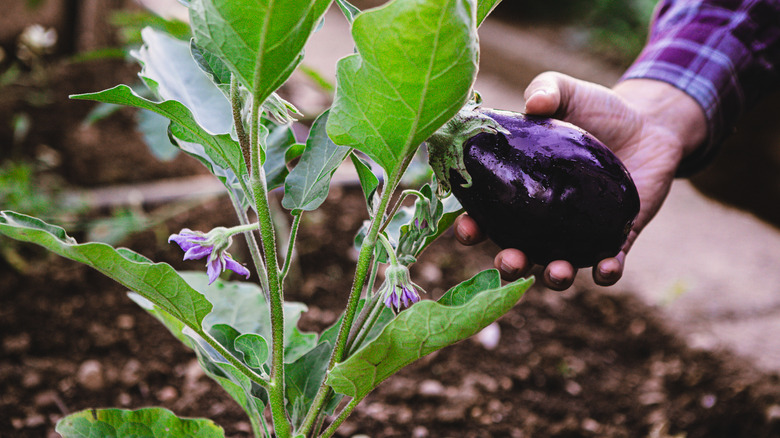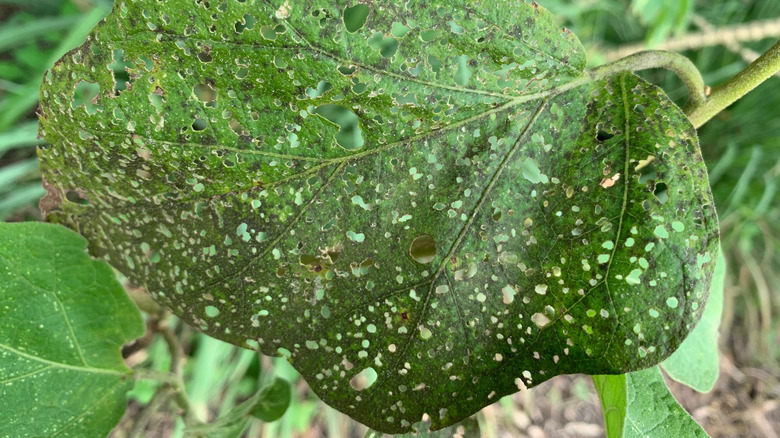Signs That Your Eggplants Are Dying
Eggplants are delicious and easy to cook with, but growing them yourself can be a little trickier. You have to grow eggplants with the right companion plants, give them the proper conditions to thrive, and avoid major eggplant-growing mistakes like planting with other heavy feeders. Does something about your eggplants seem a little "off"? Look out for signs that they may be dying, because if you catch them early enough, many of them are fixable.
Symptoms of a dying eggplant can manifest in a few ways, including but not limited to stunted plant growth, wilting or discolored leaves, and damaged stems. Eggplants, scientifically known as Solanum melongena, grow best with six to eight hours of full sun daily and an inch of water per week, potentially more if planted in sandier soil or a hotter environment. If its leaves are drooping and wilting, your eggplant may be dying from incorrect watering. Soft yellowing or browning leaves with a squishy stem tend to indicate overwatering, while dry and crisp browning leaves usually point toward underwatering.
There's an easy way to determine which problem it is: check the top inch of soil. If it's dry, give the eggplant a thorough drink, since fewer heavy waterings encourage roots to grow deeper and stronger than multiple shallower ones. If the top inch of soil is still moist, give your eggplant time to dry out before watering again — as long as the problem hasn't advanced to root rot, the eggplant will bounce back.
Pests and diseases that could be hurting your eggplant
In case you've already troubleshot your eggplant's level of sun and water and it still isn't recovering, or if you've noticed damaged stems and leaves, there may be more serious issues like pests or disease. If your plant's stems have been cut, the aptly-named cutworms may be chewing through its stems and leaves. They're easier to spot when they're active at night, or if you brush away some soil to check just below ground level, but you can take down cutworms with a secret weapon from your kitchen. Pests like whiteflies or aphids are harder to see, but you should be able to notice discolored spots on the leaves and/or a sticky white residue from their presence. Flea beetles are noticeable since they chew large holes in the leaves. Ditch these pests by washing your eggplant with soapy water, or spraying it with this simple DIY neem oil solution. Your plant will recover if you stop the infestation early enough.
The most complex eggplant-killing problem to handle is disease. Depending on the cultivar, it can be susceptible to diseases like verticillium wilt and phytophthora blight. With verticillium wilt, leaves will yellow along the edges and start wilting. Phytophthora blight is a mold disease that browns your plant and creates dark streaks on the fruit. You can try a biofungicide, but the best treatment for these diseases is prevention — rotate planting areas, plant in well-draining soil, or try a different cultivar that's naturally disease-resistant.

